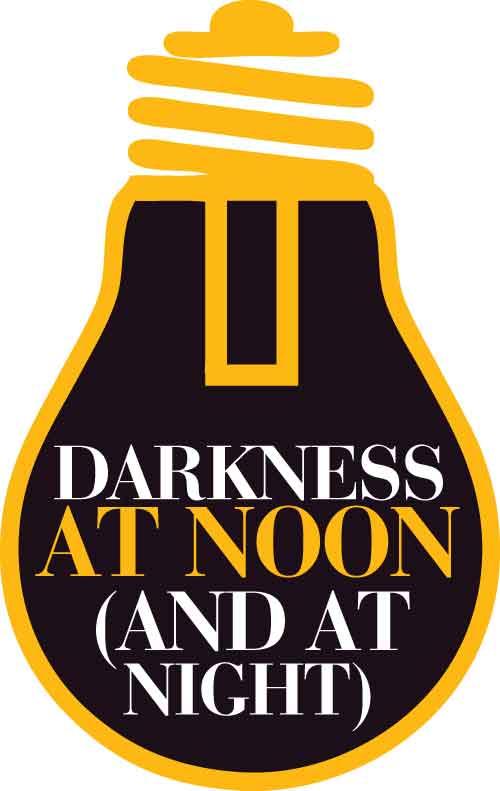Reply To:
Name - Reply Comment
Last Updated : 2024-04-26 08:21:00
 Saumya Kumarawadu, President of the Engineers’ Union of the Ceylon Electricity Board (CEB), says that they were right. There is a power crisis, and in all probability it will get (much) worse within the next two or three years. They all point at the same reason: “The CEB was unable to build new power plants after Lakvijaya Coal Power Plant in Norochcholai.” What that means is that the government will do what it has done in the last few decades: purchase electricity from diesel power plants and cave into what the Union calls the “diesel mafia.” The electricity sector in this country is rife with other mafias, of course: the Union itself is decried as a coal lobby, and it decries those who want to get to alternative power sources as LNG and solar mafias.
Saumya Kumarawadu, President of the Engineers’ Union of the Ceylon Electricity Board (CEB), says that they were right. There is a power crisis, and in all probability it will get (much) worse within the next two or three years. They all point at the same reason: “The CEB was unable to build new power plants after Lakvijaya Coal Power Plant in Norochcholai.” What that means is that the government will do what it has done in the last few decades: purchase electricity from diesel power plants and cave into what the Union calls the “diesel mafia.” The electricity sector in this country is rife with other mafias, of course: the Union itself is decried as a coal lobby, and it decries those who want to get to alternative power sources as LNG and solar mafias.
Sri Lanka prides itself on certain achievements which have not yet been clinched by the other countries in the region. We have the highest literacy rate and a commendable healthcare sector, and we are the only country in the region providing an uninterrupted power supply 24/7 throughout the year. Certain critics point out that this is because we charge the highest tariffs, but that’s not actually true: rates per unit are equal to, if not lower or a little higher than, the rates in other countries.
Consider that some of these countries are richer than us, and yet at the same time have to rely on “borrowed power” from regional players like India (which in itself is prone to constant blackouts and load shedding throughout the year, having faced the worst outage experienced by any country in recent memory in 2012), and you will realise that as with our education system and healthcare system, we are certainly better than some of them. Such a record does not and indeed should not permit complacency, though: there’s a lot that needs to be done if we are to avert a major power crisis, and if we are to turn to more sustainable sources of energy.
The problems in Sri Lanka’s electricity sector are largely those of not being able to supply a forever booming demand for power. In the 1980s, the mantra of the hour was hydroelectricity, particularly with the opening of the Mahaweli Scheme that showed, for the first time, what accelerated development could do for the country. Water was the precious resource; with the private sector taking over the economy and domestic consumption rising by leaps and bounds, it was then felt that the sector should explore alternative sources of power. That’s when a proposal was made, almost signed, and later rescinded, to build a coal power plant.
The consequences of not fast-tracking this proposal were felt (as the consequences of not building any power plants since 2014 are being felt now) slowly, gradually, but inevitably. Chandrika Bandaranaike Kumaratunga’s government is known for many things, but the one thing I remember are the blackouts. They came in patches right after 1994, the year Kumaratunga assumed power.
Despite the many investment plans drawn up to avert a power crisis, they were “either delayed, substituted by other plans, or not implemented due to various interventions”. The most immediate result of this dithering around: the worst blackout experienced by the country until then in 1996. At eight hours however, the outage was mild compared with what the country would get in the second Kumaratunga government.
The 1996 load shedding (to balance the Grid, the demand must match the supply, and if the one exceeds the other in particular areas, the power supply to those areas are cut off), was extended indefinitely five years later to four hours in the morning and four hours in the evening. Some areas had it worse: no power until 10 pm.
- "Power cuts; diesel mafia to be blamed - TU"
- "CBK regime imposed longer power cuts in 1994"
- "9-hour outage plunged SL out of power in March 2016"
The economy suffered: “One of Sri Lanka’s leading business groups, has already closed a factory and relocated to the United Arab Emirates in part due to inadequate electricity supply. The president of the Chamber of Small Industries told the media that small and the medium industries were being badly affected by power shortages and many were on the verge of closing down. Corporate analysts have expressed concerns that the power cuts, on top of the war and political instability, will further discourage foreign investment into Sri Lanka.”
Had the proposal to build a coal power plant been approved in 1996, more than 300MW would have been added to the Grid. Instead the government did what it does today: purchase emergency power from diesel plants. During the 1996 blackouts, it hired mobile power plants from a Dutch company, Aggreko, resorting yet again to the company in 2000 to generate 60MW and in 2001 to generate 40 additional megawatts. Who benefitted? “While the CEB sells power at Rs. 4.50 per KW, Aggreko has profiteered from the crisis by charging at Rs.12.” 
To resolve the issue, the Kumaratunga government tried to “buy its own naptha and other diesel-fuelled generators, capable of producing 300MW.” In other words it would have generated the amount of power a coal plant would have. But even this wasn’t enough, and if implemented the extra costs would certainly have been passed to the consumer. The political infighting between the SLFP and the UNP, the lack of any real impetus for growth in the absence of a political consensus, and the conflict with the LTTE that “survived” the peace talks, all resulted in the government shelving any and every plan it had to resolve the power crisis. The Ministers couldn’t care less there, of course: the power crisis didn’t affect them.
Moreover, it was highly unlikely that these reform proposals would have improved the CEB’sprospects: at the time of the outage in 1996, it had recorded profits of Rs. 4 billion; four years later, there were losses of Rs. 4 billion. Added to this were the woes of an imminent privatisation; in 1996, workers at the CEB struck work in the face of a proposal to sell the CEB on the recommendation of international financial institutions, the same institutions which are repeating their calls for privatisation and deregulation now. (History, Marx wrote, repeats itself. Kumaratunga’s regime was a tragedy; the yahapalana government, in every other respect, is more farcical).
Regardless of the merits or demerits of coal power plants, it was felt back then as a necessity. That was a different time, of course: two decades of Reaganite-Thatcherite deregulation had taken their toll on the climate, the Kyoto Protocol was being drafted, and the US and China (a superpower and an emerging power) were refusing to sign it. It was a curious paradox, and its effects were felt in Sri Lanka in the form of vehement opposition to coal; the Bishop of Chilaw, Rt. Rev. Marcus Fernando led and mobilised the campaign against building a power plant; the Press took his side for two reasons: the site (in Puttalam) was vulnerable to terrorist attacks, and the cost of the investment would not be commensurate with the toll on the environment.
We know the rest of the story: a new government succeeded Kumaratunga in 2004, the new President, casting aside objections from the Bishop (who one commentator, perhaps a little unfairly, accused of soliciting Catholic votes through his campaign) gave the green light to the delayed proposal, work commenced in 2006, and the first unit of the power plant was  completed five years later. The cost had been around Rs. 46 billion initially. Once the second phase was completed, the plant was estimated to generate around 500MW. Today it generates around 900 megawatts, despite a deficit of 300MW (owing to the prevailing drought).
completed five years later. The cost had been around Rs. 46 billion initially. Once the second phase was completed, the plant was estimated to generate around 500MW. Today it generates around 900 megawatts, despite a deficit of 300MW (owing to the prevailing drought).
"Had the proposal to build a coal power plant been approved in 1996, more than 300MW would have been added to the Grid. Instead the government did what it does today: purchase emergency power from diesel plants"
There was a catch to all this, of course: the original proposal had been to build a plant through a Japanese firm; the plant had now been built by a Chinese firm with what was felt to be questionable equipment. Whether or not the equipment was as outdated as the anti-China lobby likes to put it, we don’t rightly know. What we do know is that since it was commissioned in 2012, the plant has faced constant breakdowns, the nadir of which was the March 2016 nine-hour outage that left the entire island out of power. Since then the plant has broken down even more frequently, the most recent incident being the breakdown of the second generator two weeks ago.
Through all this we refuse to learn: as engineers and trade union representatives to so aptly put it, whenever there’s a heavy monsoon and the rain catchment areas overflow, we forget the fact that at times of drought, we have to rely on that one plant.
Nothing has been done since 2014, and demand for electricity, if the statistics are correct, is rising (at around 5.5% a year). In the meantime, CEB engineers lobby for coal, the Public Utilities Commission lobby for alternative sources, and commentators and critics bemoan the absence of a viable long term plan AND the sustained reliance on coal and diesel. Where are we headed to? Probably another CBK era of power cuts. And not just the four-hour cuts we’re experiencing now.
The author can be reached on UDAKDEV1@GMAIL.COM

Add comment
Comments will be edited (grammar, spelling and slang) and authorized at the discretion of Daily Mirror online. The website also has the right not to publish selected comments.
Reply To:
Name - Reply Comment
US authorities are currently reviewing the manifest of every cargo aboard MV
On March 26, a couple arriving from Thailand was arrested with 88 live animal
According to villagers from Naula-Moragolla out of 105 families 80 can afford
Is the situation in Sri Lanka so grim that locals harbour hope that they coul